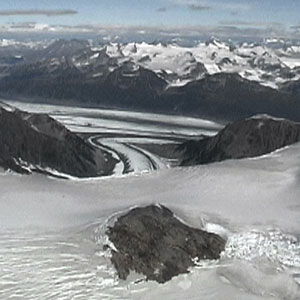Join us for conversations that inspire, recognize, and encourage innovation and best practices in the education profession.
Available on Apple Podcasts, Spotify, Google Podcasts, and more.

Alpine glacier.
During this session, you will have an opportunity to build understandings to help you:
If most mountains are formed in the same way, why do they look so different? In this session, we explore the forces sculpting the ever-changing landscape of the Earth. One particular landform — Cape Cod, a peninsula off Massachusetts — is the setting for our investigation.
This video opens with a geologic puzzle. Cape Cod is an unusual landform, as it has no bedrock, and is made almost entirely of sand. How did this peninsula form and what secrets can it reveal about the processes that sculpt the surface of the Earth? We join our geologist host Britt Argow on Cape Cod to learn about how the Cape formed, and how understanding this assists us in answering our mountain question.
As we think about this question, we consider two mountain ranges that look very different: the Appalachian Mountains in North America and the Himalayas in Eurasia. We join Dr. Sherilyn Williams Stroud in the Appalachian Mountains of western Massachusetts in her search for evidence in the rocks and clues in the landscape. Our exploration leads us to focus on the Earth’s history of ice ages, when continents were forever changed by the advance and retreat of glaciers.
During the program, interviews with children uncovers their ideas about where the sand on the beach comes from, the differences between “old” and “new” mountains, and the erosive power of water. We also visit science specialist Barbara Waters and fifth-graders at the Quashnet Elementary School on Cape Cod, in Mashpee, Massachusetts. As she facilitates an exploration of groundwater, we observe the students constructing models depicting what is under the surface on Cape Cod and the journey a raindrop takes as it flows into and through the ground.